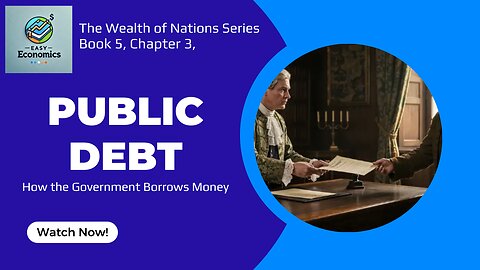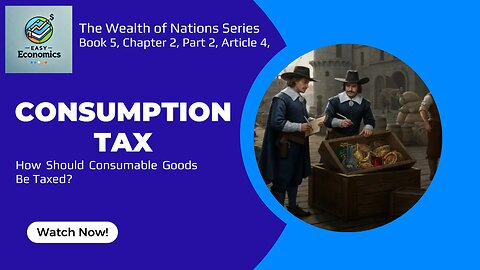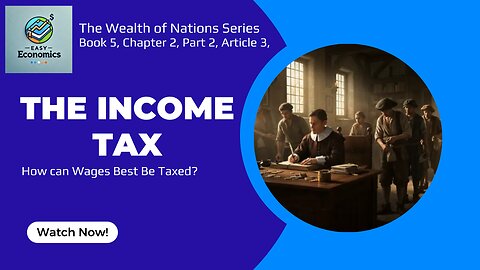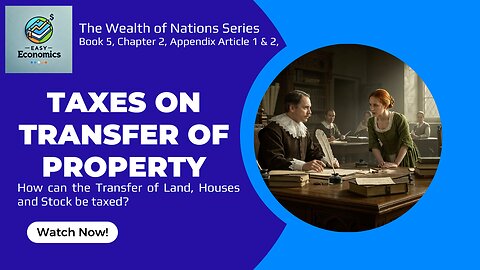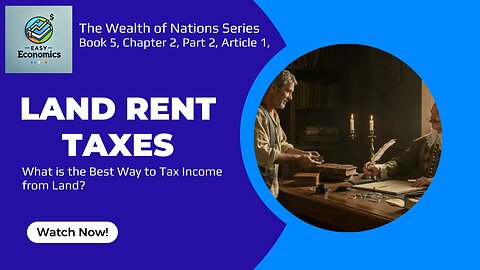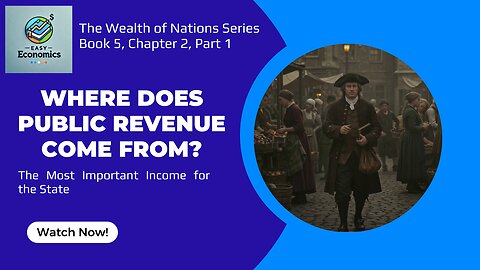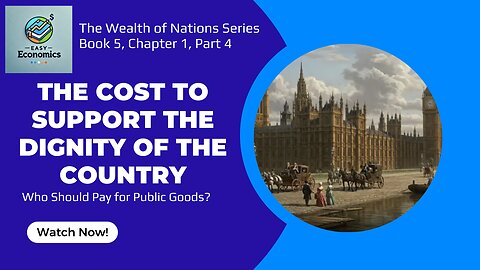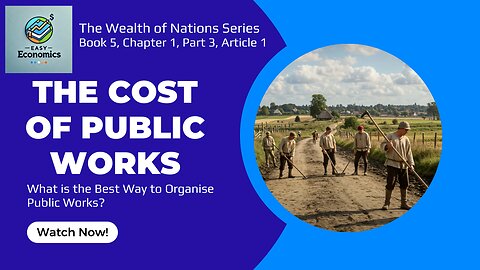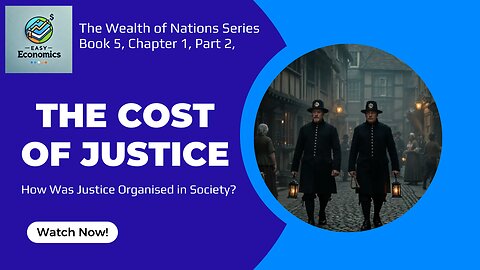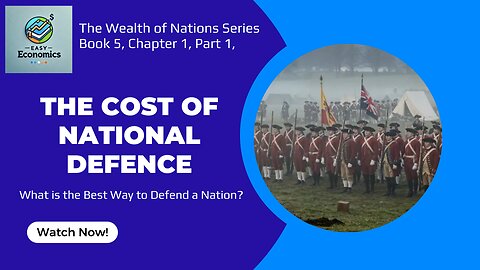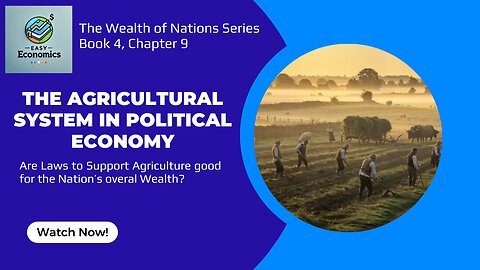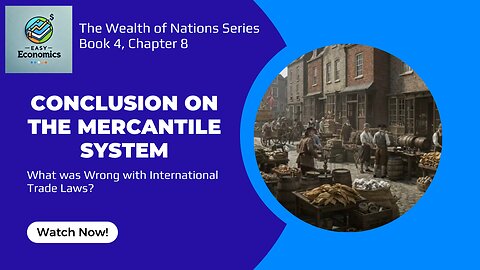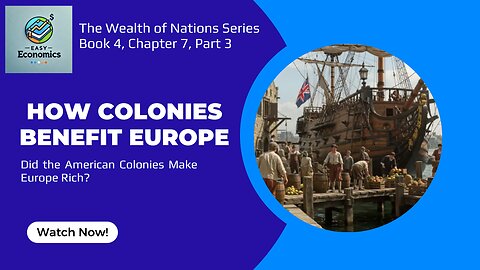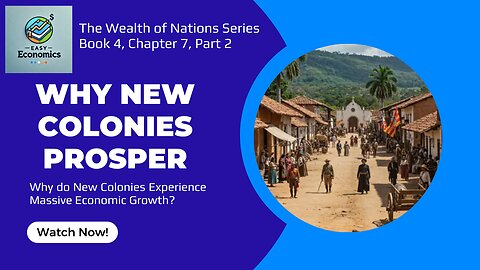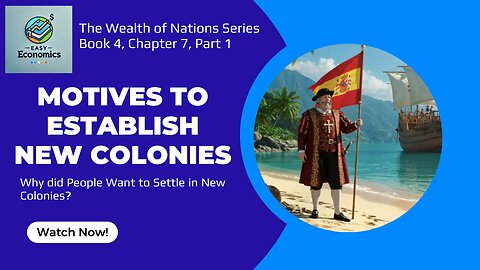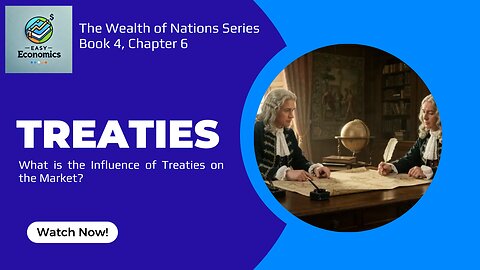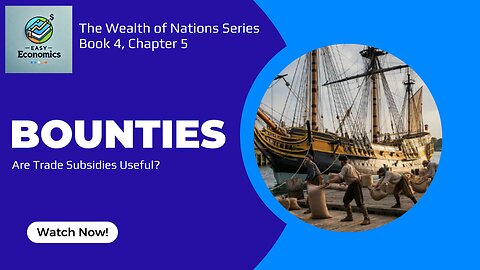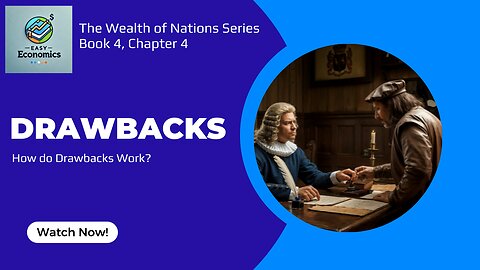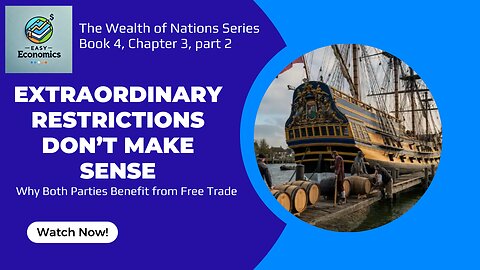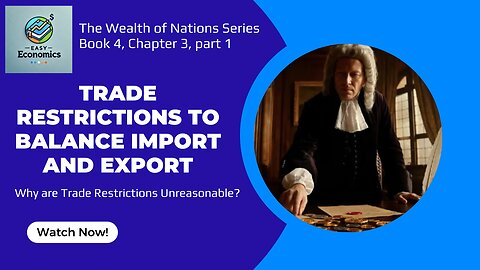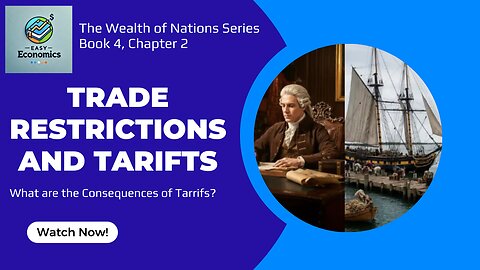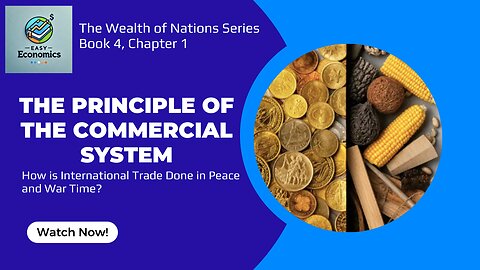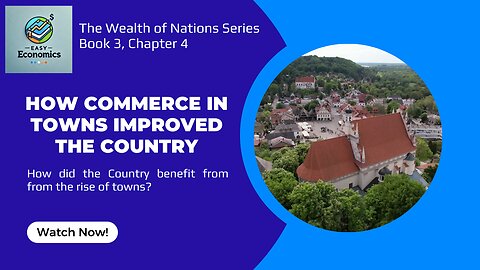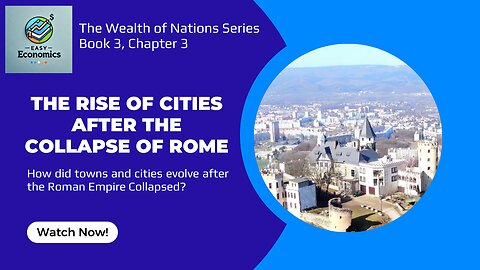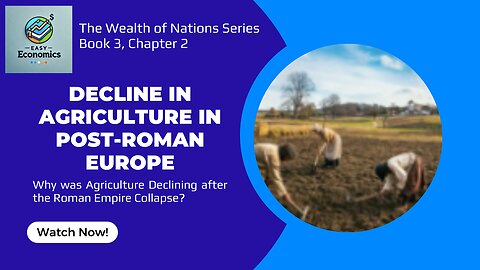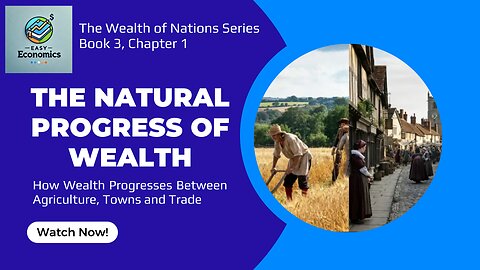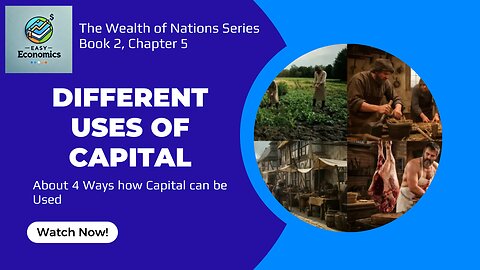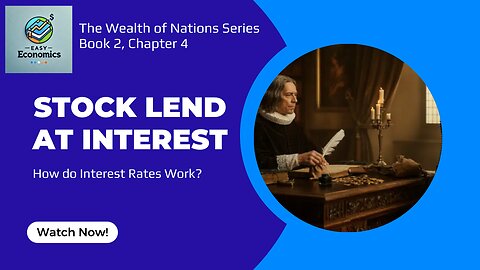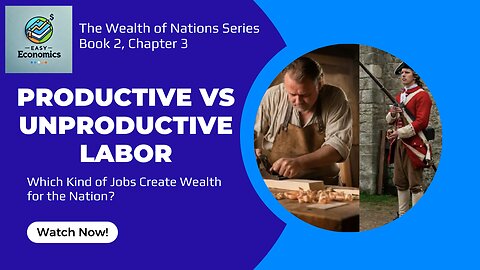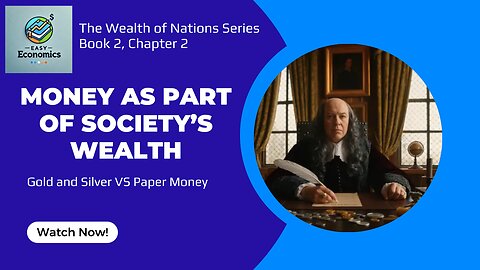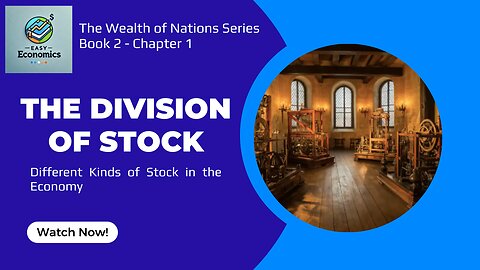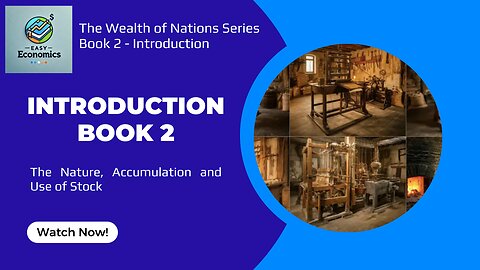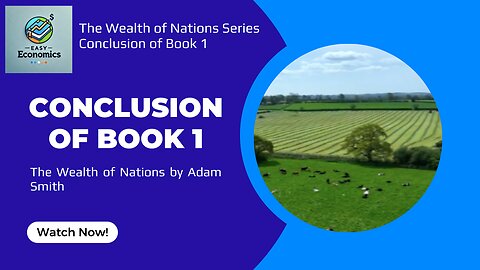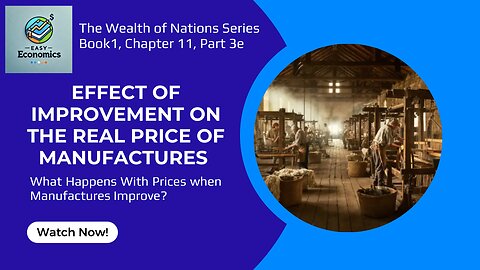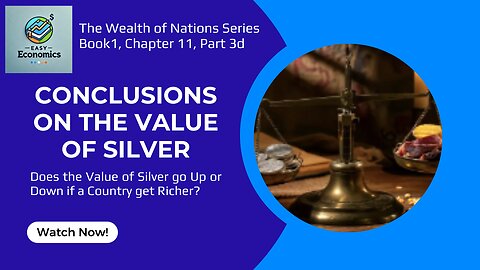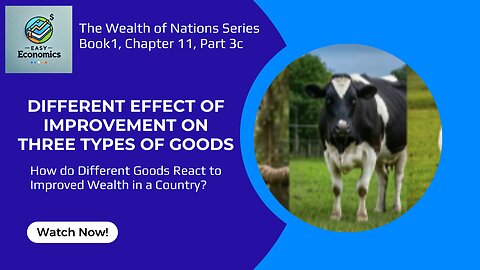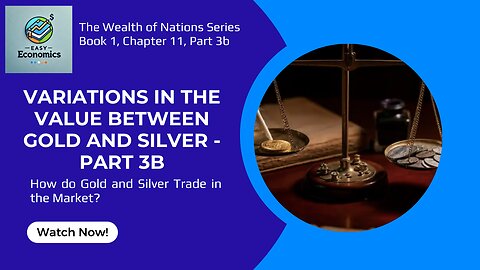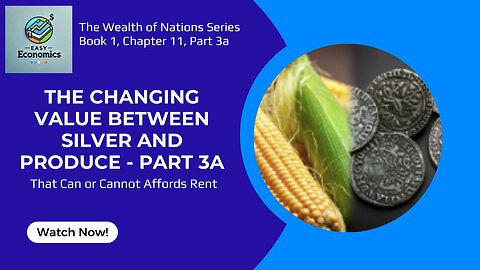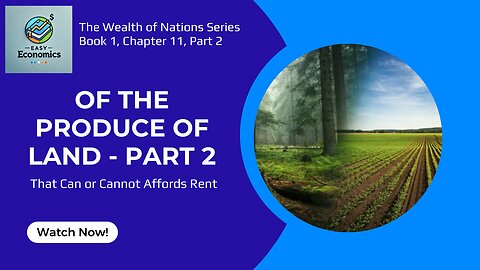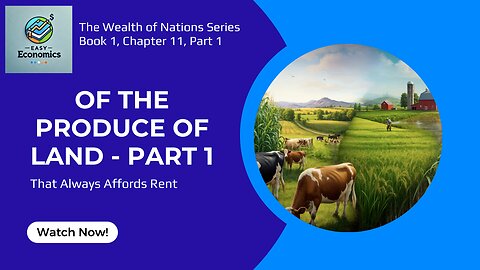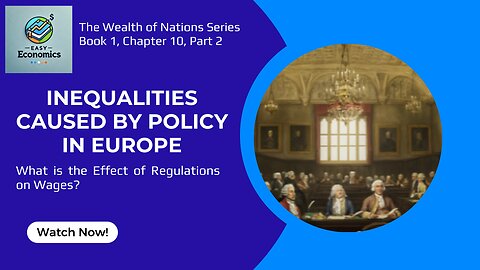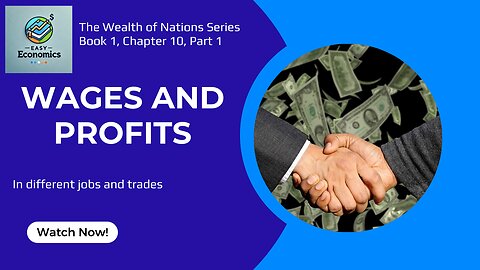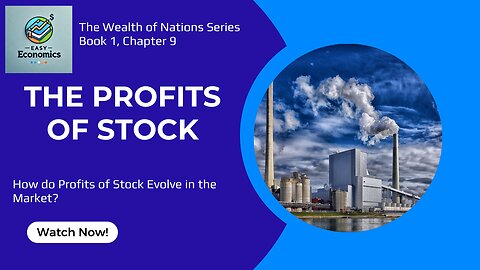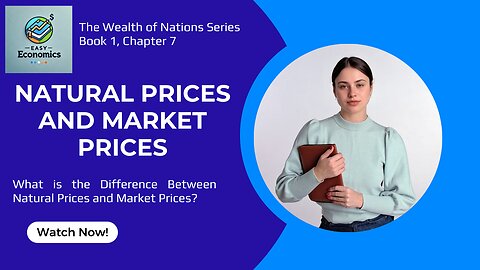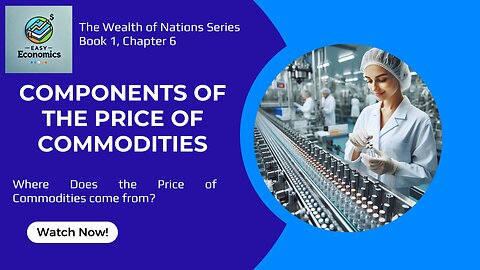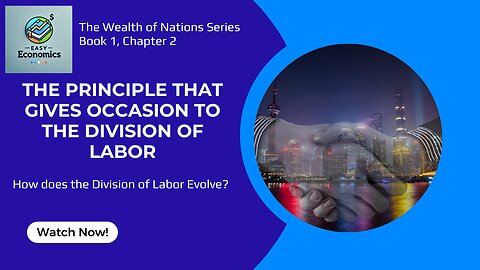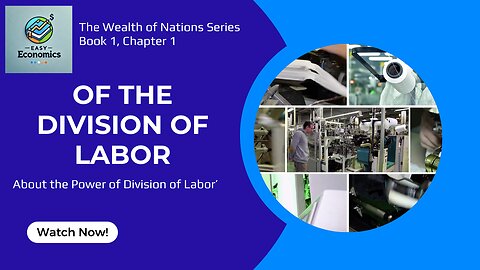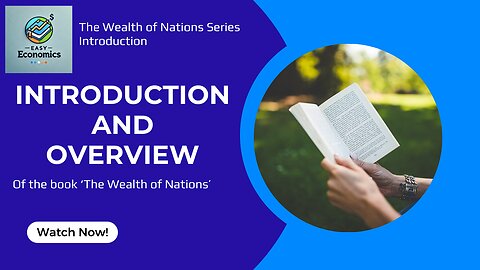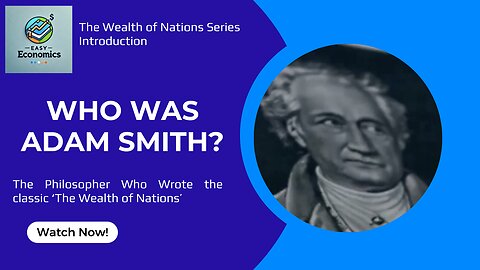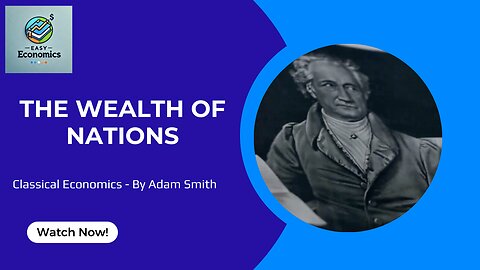Premium Only Content

The Wealth of Nations Book 5 Chapter 1 - Public Debt
The Wealth of Nations Book 5 Chapter 2 Part 2 Article 4 - Taxes on Consumable Goods
The Wealth of Nations Book 5 Chapter 2 Part 2 Article 3 - Taxes on Wages
The Wealth of Nations Book Chapter 2 Appendix Article 1 & 2 - Taxes on Property Transfers
The Wealth of Nations Book 5 Chapter 2 Part 2 Article 2 - Taxes on Profits of Stock
The Wealth of Nations Book 5 Chapter 2 Part 2 Article 1 - Taxes on the Rent of Land
The Wealth of Nations Book 5 Chapter 2 Part 1 - Exploring Public Revenue Sources
The Wealth of Nations Book 5 Chapter 1 Part 4 - Who Should Pay for Public Cost?
The Wealth of Nations Book 5 Chapter 1 Part 3 Article 3 - The Cost of Religious Influence
The Wealth of Nations Book 5 Chapter 1 Part 3 Article 2 - The Real Cost of Education
The Wealth of Nations Book 5 Chapter 1 Part 3 Article 1 - The Expense of Public Works
The Wealth of Nations Book 5 Chapter 1 Part 2 - The Cost of Justice
The Wealth of Nations Book 5 Chapter 1 Part 1 - The Cost of National Defence
The Wealth of Nations Book 4 Chapter 9 - Systems in Political Economy
The Wealth of Nations Book 4 Chapter 8 - The Mercantile System's Hidden Flaws
The Wealth of Nations Book 4 Chapter 7 Part 3 - How Europe Benefits from American Colonies
The Wealth of Nations Book 4 Chapter 7 Part 2 - Why New Colonies Prosper
The Wealth of Nations Book 4 Chapter 7 Part 1 - The Motives for Establishing New Colonies
The Wealth of Nations Book 4 Chapter 6 - The Hidden Cost of Trade Treaties
The Wealth of Nations Book 4 Chapter 5 - Bounties, The Hidden Cost of Subsidies
The Wealth of Nations Book 4 Chapter 4 - Understanding Drawbacks in International Trade
The Wealth of Nations Book 4 Chapter 3 Part 2 - Why Extraordinary Restrictions Don't Make Sense
The Wealth of Nations Book 4 Chapter 3 Part 1 - The Unreasonableness of Import Restrictions
The Wealth of Nations Book 4 Chapter 2 - Restrictions on Goods that can be Produced at Home
The Wealth of Nations Book 4 Chapter 1 - The Principle of Commerce and Mercantile Systems
The Wealth of Nations Book 3 Chapter 4 - How Commerce in Towns Improved the Country
The Wealth of Nations Book 3 Chapter 3 - The Rise of Cities After Rome's Fall
The Wealth of Nations Book 3 Chapter 2 - The Decline of Agriculture in Post-Roman Europe
The Wealth of Nations Book 3 Chapter 1 - The Natural Progress of Wealth Explained
The Wealth of Nations Book 2 Chapter 5 - The Different Uses of Capital
The Wealth of Nations Book 2 Chapter 4 - Understanding Stock Lend at Interest
The Wealth of Nations Book 2 Chapter 3 - Understanding Productive and Unproductive Labour
The Wealth of Nations Book 2 Chapter 2 - Money as Part of Society's Wealth
The Wealth of Nations Book 2 Chapter 1 - The Division of Stock
The Wealth of Nations - Introduction Book 2 - Nature Accumulation and Use of Stock
The Wealth of Nations - Conclusion of Book 1
The Wealth of Nations Book 1 Chapter 11 part 3e - Effect of Improvement on the Price of Manufactures
The Wealth of Nations Book1 Chapter 11 Part 3d - Conclusion on the Value of Silver
The Wealth of Nations Book 1 Chapter 11 Part 3c - Different Effects on Improvement of Three Goods
The Wealth of Nations Book 1 Chapter 11 Part 3b - Variations in the Value of Gold and Silver
The Wealth of Nations Book 1 Chapter 11 Part 3a - The Change Between Value of the Produce and Silver
The Wealth of Nations Book 1 Chapter 11 Part 2 - Of The Produce of Land
The Wealth of Nations Book 1 Chapter 11 Part 1 - Of the Rent of Land
The Wealth of Nations Book 1 Chapter 10 Part 2 - Inequality Created by Europe's Policies
The Wealth of Nations Chapter 10 Book 1 Part 1 - Wages and Profits in Different Jobs
The Wealth of Nations Chapter 9 book 1 - Of the Profits of Stock
The Wealth of Nations Chapter 8 Book 1 - The Wages of Labor
The Wealth of Nations Chapter 7 Book 1 - Understanding Natural Prices and Market Prices
The Wealth of Nations Chapter 6 Book 1 - Components of the Price of Commodities
The Wealth of Nations Chapter 5 Book 1 - Understanding Real VS Nominal Prices
The Wealth of Nations Chapter 4 Book 1 - The Origin and the Use of Money
The Wealth of Nations Chapter 3 Book 1 - The Division of Labor, Market Size Matters
The Wealth of Nations Chapter 2 Book 1 - The Principle Which Gives Occasion to the Division of Labor
The Wealth of Nations Chapter 1 Book 1 - The Power of Division of Labor
The Wealth of Nations - Introduction and Overview
Adam Smith - The Philosopher Who Changed How We See The World
The Wealth of Nations - A Timeless Guide to Prosperity
The Wealth of Nations Book 3 Chapter 1 - The Natural Progress of Wealth Explained
Are you interested to read the original book? Get ‘The Wealth of Nations’ by Adam Smith now: https://amzn.to/3W5xeku
This video explores the natural progression of wealth in societies, beginning with agriculture as the foundation of economic growth. The countryside produces food and raw materials, while towns provide manufactured goods, creating a mutually beneficial relationship. We discuss how agriculture sustains both rural populations and urban centers, enabling towns to grow as surplus production increases. Over time, manufacturing and trade develop, following the agricultural base. Historical examples, like the American colonies and ancient civilizations such as Egypt and China, illustrate this natural order of economic development. However, modern Europe often reversed this sequence, with foreign trade driving manufacturing and eventually improving agriculture. Learn about the interplay between town and countryside, the evolution of industries, and how the natural progression of wealth fosters sustainable economic growth. This video provides a concise understanding of how societies grow and thrive through balanced cooperation and strategic investment in their economies.
00:00 - Introduction to the Natural Progress of Wealth
00:12 - Town and Countryside Exchange
00:50 - Agriculture as the Foundation
01:16 - The Role of Tradespeople
01:43 - Land and Manufacturing
02:07 - Foreign Trade
02:41 - Historical Progression of Economies
03:10 - Conclusion
-
 LIVE
LIVE
FyrBorne
9 hours ago🔴Warzone M&K Sniping: Does Battlefield Pose A Threat To Call Of Duty BO7?
130 watching -
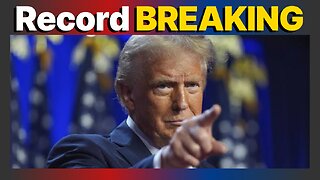 24:19
24:19
DeVory Darkins
10 hours ago $3.56 earnedTrump scores RECORD BREAKING NEWS Democrats dealt FATAL BLOW after tragic event
5.15K9 -
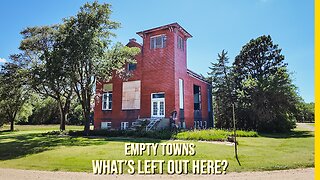 41:45
41:45
Chris Harden
7 days agoKansas Backroads | What's Really Out Here? - Rice County
6 -
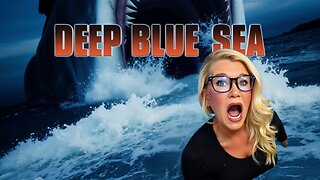 46:38
46:38
SouthernbelleReacts
6 days ago $0.02 earned"Smart Sharks, Dumb Decisions | Deep Blue Sea (1999) Reaction & Commentary"
2.15K1 -
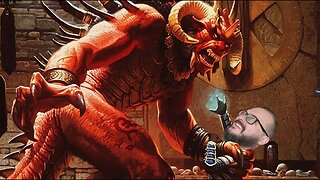 16:30
16:30
ColdBeer
4 days ago20 Best Action RPG Games like Diablo | 2025 Edition
4.32K3 -
 16:33
16:33
AndresRestart
14 hours ago $0.28 earnedHUGE Nintendo Game Release Date Info Just Got Out Apparently!?
1.04K -
 16:49
16:49
Eat Sleep Cruise
7 days agoOur HONEST Celebration Key Review - Carnival's New Private Island in The Bahamas
1.14K -
 8:41
8:41
nospeedlimitgermany
5 days ago $0.01 earnedBMW 316i E36 Compact 102 PS Top Speed Drive German Autobahn No Speed Limit POV
52 -
 25:38
25:38
Clownfish TV
15 hours agoAmerican Eagle Sydney Sweeney Situation is INSANE...
4.32K10 -
 2:46
2:46
Blackstone Griddles
14 hours agoBetty's Breakfast Tacos on the Blackstone Griddle
3.07K3
